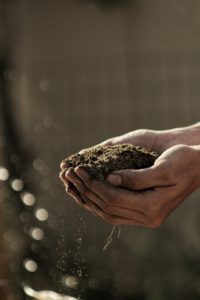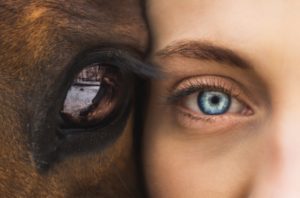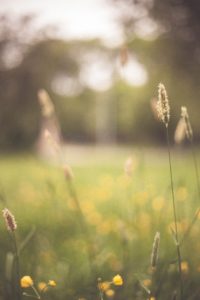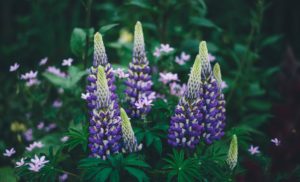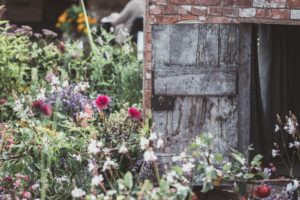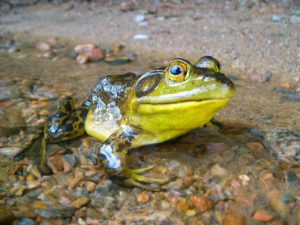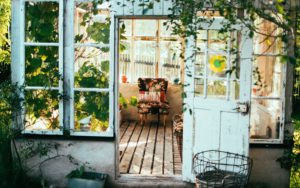Holistic Management 5: Ecosystem Processes
After defining the whole we want to manage and our holistic context, and recognizing the necessity of planning for failure, the next part of holistic management planning is looking at ecosystem processes and the tools we use to manage them.
Savory’s expertise is focused on land management, and at this point in his book, Holistic Management, he spends some time educating the reader about water and mineral cycles, community dynamics and energy flow as they pertain to the soil.
Ecosystem, however, is defined by Oxford Online Dictionary as “a complex network or interconnected system” of “interacting organisms and their physical environment.” If we’re seeking to manage a family unit, a work team, a business, a job, or any other kind of organization not directly connected to the land (remembering all human activities are ultimately rooted in Planet Earth), ecosystem processes remain an important component to consider.
Community dynamics include the whole community. If we have done an effective job of defining our whole, we’ve already broadly defined our community. In my case, my community context includes the human and animals I live with; those people I work with, who are also my community of friends; my family, because we are always working out of our family context; and the plants and animals we share our 26 acres with. I also include a future team of writing support professionals, such as an editor, agent, and publisher.
This seems sufficiently complex, but it’s not even half the story, because most of the life around us is invisible to our eyes. We have just spent a year being reminded at every turn how powerful the world of microbes is. Our bodies are inhabited by uncountable microscopic organisms without which we could not live. We teem with viruses, bacteria, and fungi, and every living being we’re in contact with carries a universe of life with them, too.
We are just now beginning to understand how essential these microbes are to our health and the health of the planet. Healthy soil is full of complex microbial life that helps it retain water, cycle minerals, and provide plants with what they need to thrive. Without healthy soil, mineral and water cycles fail and ecosystems collapse.
Community dynamics are hugely complex and often chaotic. We don’t know enough to see the full scope of them, but we can observe the difference between healthy and unhealthy communities. A flock of chickens, an orchard, a garden, a team, a family, a marriage, all reflect their degree of health in obvious ways.
Energy flow is part of any ecosystem process. For land management, energy flow is obviously driven by sunlight, climate, weather, and the activities of members of the community.
Energy is “strength and vitality required for sustained physical or mental activity (Oxford Online Dictionary). You might notice that definition does not reference money, but the health of our finances has become closely tied to our perceived strength and vitality, as well as our position of power.
Our current political context is a stark example of what happens when the energy flow of money is dammed. Flow implies movement and cycles, an open hand out of which resource is both given and received. When water or mineral cycles are interrupted, the ecosystem suffers. Energy becomes stagnant and the whole system falters. Interconnection breaks down. The system dies, including the organism that withheld energy from everyone else.
This doesn’t occur in natural ecosystems that are not interfered with, but humans do it all the time. It’s the end result of a power-over culture. Some thrive at the expense of the impoverished majority, creating an unsustainable situation that eventually collapses and allows energy to be redistributed.
Any management plan will include us, the planner, as well as other living organisms, and all those living organisms, from a human being to the complex creature we call a cat or a cow to the tiniest soil microbes, need appropriate energy to thrive.
At this point I feel overwhelmed. Some days I can barely take care of myself, let alone anyone or anything else. How can I possibly worry about the soil microbes next to our front steps when I feel too tired or rushed to prepare and eat a good meal? And what does any of it have to do with earning a living through my writing?
Holistic planning is a dance between the tension of the big picture, or holistic context, and discerning where our power lies within that picture. If I prepare and eat a meal that provides good fuel for my physical needs and the needs of the whole community of viruses and bacteria that lives with me, I’m maintaining a good energy flow in my personal ecosystem, which supports my holistic management plan.
There is no writing if there is no me. Nobody else can write my stories. I’m the only one.
If I choose to implement a compost toilet and/or grey water system, the wastes that my body produces (in collaboration with billions of microbes) as a result of energy flow can then be properly managed and returned to the soil ecosystem, which can break it down and use it to enhance water and mineral cycles and the production of more food for my next meal.
If I feed my cats (which greatly enhance my health and happiness) an appropriate diet that meets their physical energy needs, as well as the needs of their living biomes of viruses and bacteria, and compost the waste and wood pellets from their litter boxes, I’m once again supporting a healthy energy flow. Nothing is wasted. One organism’s excretions feed other organisms in the community.
If we want food sustainability, this is the kind of flow we must commit to. Animals and plants evolved together in order to maintain this kind of a sustainable energy cycle, but human activity has broken that elegant flow. We can repair it, if we’re willing to learn and can muster the political will.
At first glance, community dynamics and energy flow seem to have nothing to do with a business plan, but that only demonstrates how unskilled we are at holistic problem solving. We can’t expect a sustainable and effective plan if we don’t use energy of all kinds effectively and recycle it back into the ecosystem with as little waste as possible. The healthy whole is the last level, not the first.
To be alive is to be part of a community. None of us can escape community dynamics and energy flow. None of us can escape dependence on healthy mineral and water cycles. We are now beginning to experience the consequences of centuries of refusal to consider or take responsibility for ecosystem processes.
As I seek sustainability and security for myself, I must also understand my personal whole as part of a larger whole, which in turn forms part of a larger whole, and so on. I am both the center of my whole and a community member for countless other forms of life. I bear responsibility on two fronts: my own power and needs and choosing a position of power in regard to other members of the community. Will I enhance power for others or undermine it? Will I enhance energy flow or block it? Will I work cooperatively with my community or ignore it?
This balance between self and others is the dynamic tension of life. Holistic management planning and decision making put it center stage. Complex systems are by their nature dynamic and nonlinear; both regaining lost balance and maintaining it require resilience and presence, a commitment to living more mindfully and with a wider awareness of the life around us in all its forms.
We can no longer afford to benefit ourselves at the cost of others.
